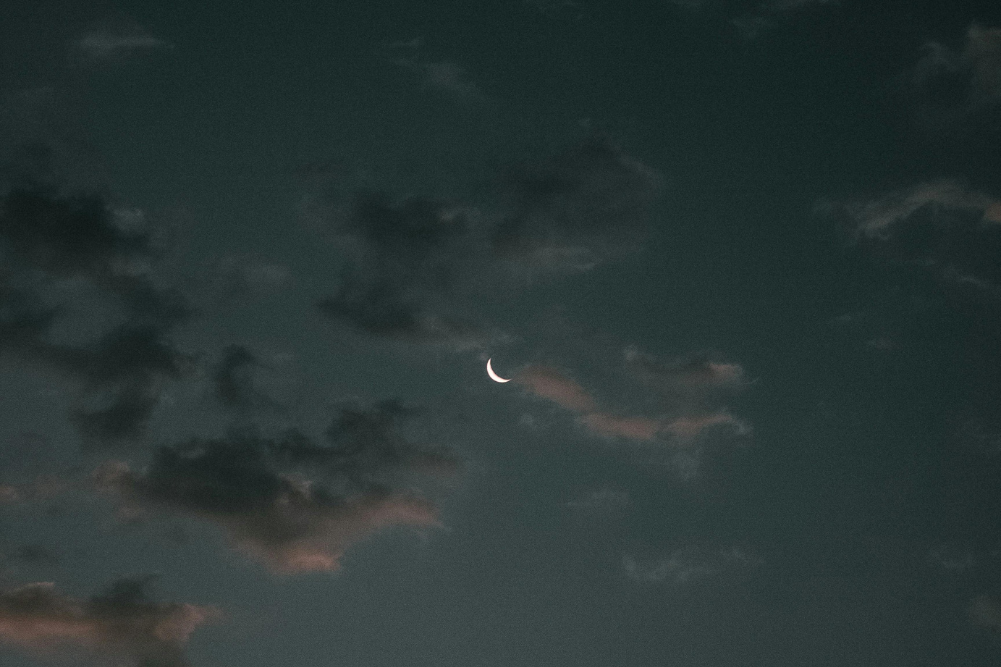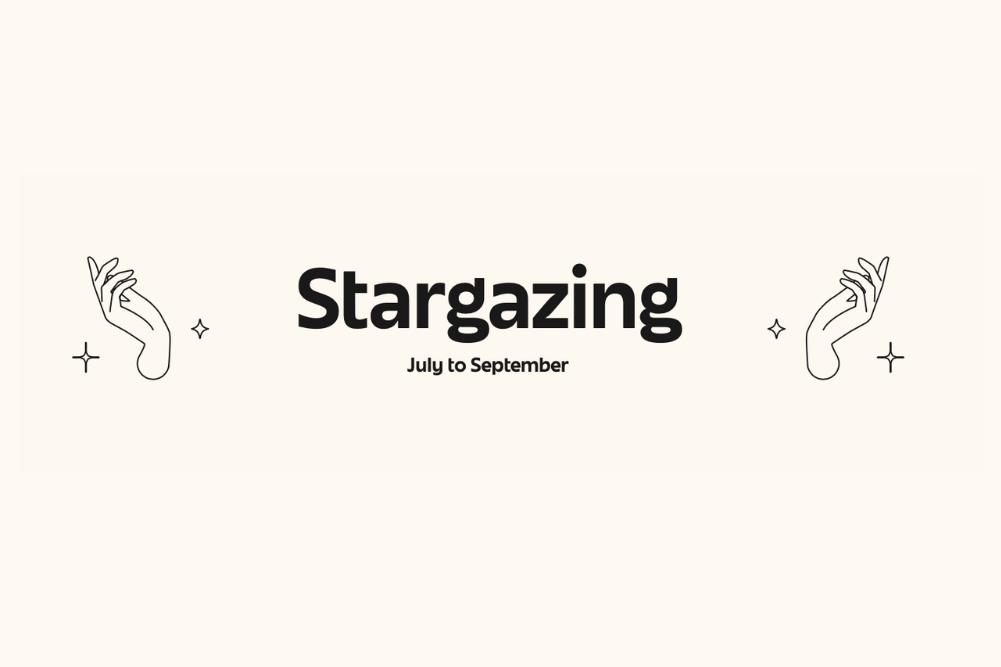What is Indian astrology? Discover the basics of jyotish
The ancient Indians were a sky-watching culture. In addition to noting a 12-fold division of the sky, their earliest levels of astrology began with observing the Moon as it travelled through 27 small constellations called nakshatras.
Each nakshatra was associated with a different ancient deity, and it was important for religious observances to conduct rituals at specific times based on astrological and astronomical factors. This is still true today: modern Hindu priests have at least a rudimentary knowledge of astrology so they can perform their ritual functions. This marks the first significant difference between western and Indian astrology.
Jyotish, the Sanskrit word for astrology, means “science of light”.
In the west, astrology had to deal with multiple language translations through the ages, book and library burnings, fights with the Catholic Church and, more recently, with science. However, in India, astrology has always been part of the culture. It represents an unbroken tradition united in a single language, Sanskrit, spanning at least 2000 years. Jyotish, the Sanskrit word for astrology, means “science of light”. A practitioner of jyotish is a jyotishi.
Because of their age-old observation of the Moon’s course through the night sky, when the Indians began doing horoscopic or chart-based astrology, they continued to use the stars themselves. Indian astrology uses a sidereal zodiac, based on the constellations of the zodiac, where the first star of Aries marks the beginning of the zodiac wheel. This is in contrast to western astrology, which uses the first day of spring in the northern hemisphere (autumn for the southern hemisphere) to mark zero degrees Aries, using a seasonal or tropical zodiac, which is not based on star positions.
The Indian horoscope and karma
Most of the religions of India hold that you have been reborn many times, incarnating life after life, generating karma through your volitional actions and reactions. The sum total of this karma is called sanchita karma. Out of all that karma, which may span an untold number of lives, a certain portion is allotted to this particular life. This is prarabdha karma, that portion of your total karma that will be experienced during the course of your current life. This is the karma that is shown in the Indian horoscope, also called a birth chart. The job of the astrologer is to help the client navigate these karmas into a productive and fulfilling life.
These prarabdha karmas can be further divided into three sub-groups: fixed, mixed and non-fixed. Fixed karmas are things destined in this life that may be unavoidable. If you were born a short person, no amount of free will is going to make you tall. This would be viewed as a fixed karma. Certain events in life have a fixed, unavoidable quality. In the horoscope, when many chart factors point to the same conclusion, that conclusion may be a fixed karma.
There are also non-fixed karmas or inclinations. These are potentials that need a little free will or effort to manifest. These are potentially easily avoidable if you consider them undesirable. They are indicated by merely one or a very few chart factors. For example, if Mars and the Moon are close together in the same house, it might indicate you have an argumentative mother. But, if it is the only chart factor indicating that, it could just as easily manifest as financial success or technical skill.
The job of the astrologer is to improve your relationship with these devas, or at least improve the way you express their influence in your life.
Between these two extremes lie mixed karmas, which are seen when several but not all chart factors point in a certain direction. These karmas are neither strong enough to be fixed, nor weak enough to be considered non-fixed; rather, they occupy a middle ground. Mixed karmas are likely to manifest; however, if the potential result is undesirable, sustained application of free will can be brought to bear on the issue. Your free-will choices then generate another kind of karma, kriyamana karma, and these modify those karmas brought in from previous lives. Your birth chart shows your karmic inheritance but the new karmas you generate in this life (kriyamana karmas) will modify that, for good or for ill.
Elements of the horoscope
Just like western astrology, Indian or Vedic astrology uses nine planets, 12 houses and constellations instead of tropical (seasonal) signs. The constellations are called rashis, which means “heap of stars” in Sanskrit. They are basically the same 12 used in western astrology: Aries through Pisces. The houses are likewise the same in number, although some of the meanings vary. For example, in western astrology you are likely to associate the 2nd House with vehicles but in the Indian system you would look to the 4th. In Indian astrology, the 4th House is also the house of the mother, while the 9th is traditionally the house of the father.
You previously read about the nakshatras. In Indian astrology, they are used in many different ways. In addition to revealing character details, Moon nakshatras are used in some of the predictive timing systems (dashas) and play a big role in matching charts for relationships, in what western astrologers would call synastry — matching potential love partners. Each nakshatra is associated with an ancient Vedic deity and the myths surrounding that deity can illuminate your own life with regards to the placement of your moon and rising sign.
Divisional charts and yogas
Other unique features of Indian astrology are the use of divisional charts and yogas. A divisional chart is used when you want to gather more information about the topic of a certain house. For example, if you want to examine the topic of children, in addition to looking at the 5th House of the birth chart, you can also apply a particular mathematical formula to the chart to generate what is called the 7th divisional chart — a horoscope specifically about children. There are 16 traditional divisional charts to which a few more have been added over the ages, dealing with topics ranging from vehicles to parents.
Yogas are certain combinations of planetary configurations, some quite complicated, that have specific meanings. A simple example is gajakesari yoga, defined as when Jupiter and the Moon are in angles from each other and, preferably, in angular houses. In western terms, this would be when the Moon and Jupiter are together in the same house (conjunction), square or in opposition to each other, preferably in houses 1, 4, 7 or 10. This yoga is said to bring intelligence and wealth, with the wealth a result of judicious use of said intelligence.
Cosmic intelligences
Planets are called grahas in Sanskrit, which means “that which seizes you”. The planets are considered cosmic intelligences, devas (heavenly beings) or deities you can have a personal relationship with. There are nine: the traditional seven you can see with the naked eye — Surya (Sun), Chandra (Moon), Mangala (Mars), Budha (Mercury), Brihaspati (Jupiter), Shukra (Venus) and Shani (Saturn) — as well as Rahu and Ketu which, in the west, are called the North and South Nodes of the Moon respectively. They all have one thing in common: they want you to have a happy life. This is true even of Saturn, usually considered the greater malefic. The job of the astrologer is to improve your relationship with these devas or, at least, improve the way you express their influence in your life.
Part of the calculations for constructing a birth chart involves assessing each planet’s strength as well as its auspiciousness. Strength determines how well a planet is able to assert its influence in the chart, while auspiciousness indicates your experience of that influence as easy or difficult. To this end, you often want planets that rule difficult things to be weak, and planets that rule the joys of life to be strong.
The planetary devas
In Indian mythology, all the planets, including the Moon and Venus, are male figures. The stars are all female figures. To begin to familiarise you with their natures, what follows is a taste of the many stories associated with the grahas. They are quite different to their western counterparts. As the mythology came after the astrology, almost all of these stories are teaching stories that impart something about how the planets operate in the chart.
Surya, the Sun, was so hot and bright that his wife needed a break. So she made a shadow version of herself while she snuck away for a well-deserved vacation. Surya didn’t notice the switch and had relations with this shadow-wife, producing a son, Shani (Saturn).
Brihaspati (Jupiter) was married to Tara (Star), who was the object of Chandra’s (Moon) lust, and he kidnapped her. By the time Brihaspati was able to get Tara back, she had become pregnant from the Moon. As a result of this, she gave birth to Budha (Mercury). Initially not wanting to have anything to do with this child, Brihaspati was eventually won over by his intelligence and charm and proudly raised him as his son. It is said that, to this day, Budha feels resentment for Chandra as a result of his birth father’s impropriety.
Brihaspati the teacher
Another name for Brihaspati (Jupiter) is guru, which means “teacher”. Brihaspati was the guru to the devas. Once, when they lost their immortality, they went to him for guidance. He said they could regain their immortality but it would require the help of the asuras — a class of heavenly beings with god-like powers but human-like personalities, who were constantly battling the devas for control of the universe. By working together, both devas and asuras could produce an elixir that would restore immortality. Agreeing to a peace treaty with the explicit goal of sharing the elixir of immortality, the asuras aided the devas and, after many trials and tribulations, produced the elixir.
Another name for Brihaspati (Jupiter) is guru, which means “teacher”. Brihaspati was the guru to the devas.
At this point the devas decided it was too dangerous to share it with the asuras. They reasoned that, if they were all immortal, their heavenly battles would go on forever. They tricked the asuras, distracted them and began doling out the elixir among themselves. However, there was one particular asura named Rahu who saw through the trickery and snuck in line between Surya and Chandra to receive his dose. Just as he was about to take a sip, both the Sun and Moon recognised him and said, “He’s not one of us, he’s Rahu!”
At that, one of the other gods chopped off his head! But it was too late, as he had already taken a sip. Now there was an immortal head and an immortal tail — and both were angry, and instantly both attacked. Running back to Brihaspati (Guru, Jupiter), the devas asked what to do and were told, “Have you tried being nice to them? After all, you did break your agreement to share.”
The devas offered planetary status to Rahu and Ketu and that is how they became two of the nine planetary deities in Indian astrology. Still harbouring some resentment towards the Sun and Moon, they will occasionally — and only for a short time — periodically swallow them up, creating the eclipses.
The auspicious one
Mangala (Mars) is described in the mythology as something of a 16-year-old boy, born from the Earth and possessing the skills of a warrior. He often saves the day when all looks bleak. His name, Mangala, means “auspicious one”, and on more than one occasion he has dispatched evil asuras who have upset the balance of heaven. In the birth chart, he rules land and property, among other things, perhaps due to his earthly origins.
Saturn and lasting success
Shanaishchara, or Shani for short, is the Sanskrit name of Saturn. He is considered the king of the planets and bestows lasting success to those who receive his blessing. Once, long ago, Shani was filled with pride and hubris. This led him to covet lands beyond his realm and so he began conquering other celestial lands. After vanquishing many who opposed him, the devas sent Shiva the destroyer — one of the heavyweights in the Hindu pantheon — to take him down. Their lengthy battle illuminated the heavens and, after a time, Shiva overwhelmed Saturn’s might. Shaken and humbled by the experience, Shani asked for forgiveness. Shiva granted it and gave Shani the job of removing hubris and excessive pride from humanity.
Shani would later return the favour, for even the devas have to experience transits. When it was Shiva’s time to experience a difficult Saturn transit that was to last seven years, he reasoned he could spend the time safely meditating at the bottom of the sacred Ganges river. When Shiva emerged from the depths seven years later, he laughed at Shani, saying, “I was able to elude your influence!” Shani replied, “I don’t know about that. You spent seven years underwater. You call that ‘eluding my influence?’”
Together as one
Taken as a whole, Indian astrology, or jyotish, can serve as a vehicle for one’s re-enchantment with the world. Bringing to the light of consciousness your past-life karmas, merging them with your present-life dreams and aspirations, and viewing them all through the lens of planetary rhythms and cosmic intelligences results in a kind of unification of who you are, the world you live in and the greater universe within which you exist. This is the promise of India’s divine astrology.
Want more?
To read further into the myths and legends of the grahas and nakshatra deities, consult the following books:
- Myths and Symbols of Vedic Astrology by Bepin Behari
- The Greatness of Saturn by Robert Svoboda (contains stories for all nine grahas)
- Path of Light, Volume I: Introduction to Vedic Astrology by James Kelleher








